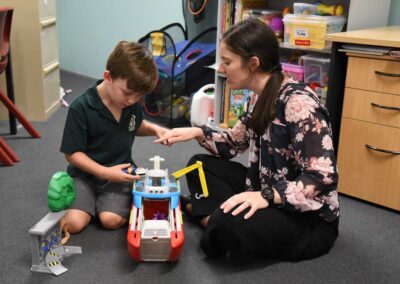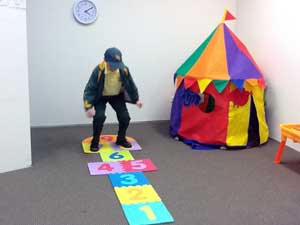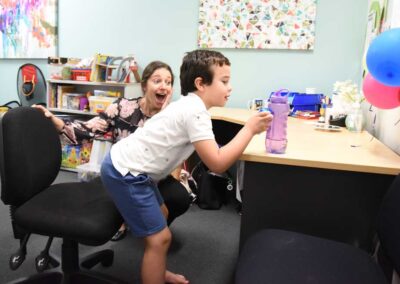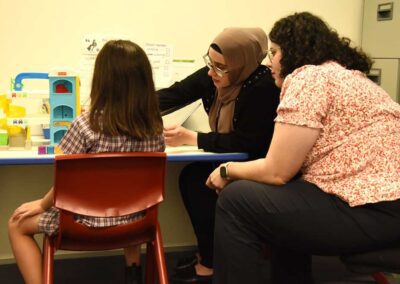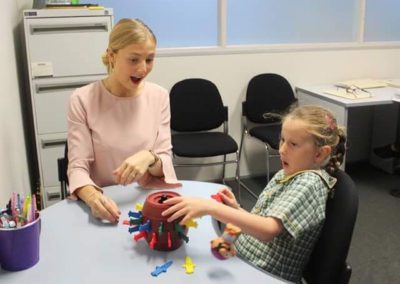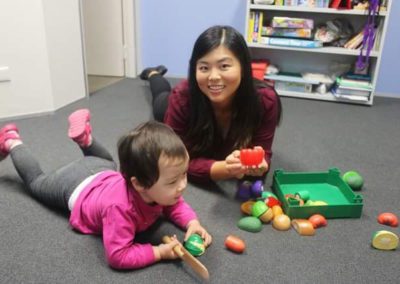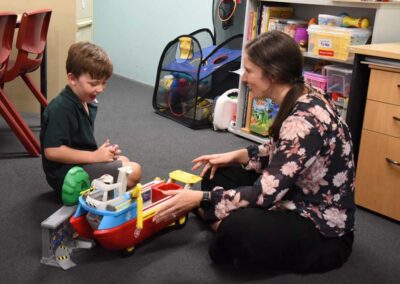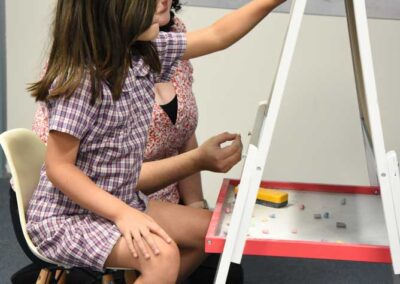 Have you watched a baby or toddler who has very few spoken words communicate with the people around them? Did they point, stretch out their arm to reach, shake their head, put their hand out or even take someone by the hand to where they wanted to go? These are all forms of gesture.
Have you watched a baby or toddler who has very few spoken words communicate with the people around them? Did they point, stretch out their arm to reach, shake their head, put their hand out or even take someone by the hand to where they wanted to go? These are all forms of gesture.
Think how often we use gestures every single day without realising it. For example, when you see someone familiar in the distance, you raise your hand and wave to them to say hello and so they can see you and walk towards you. You may shrug your shoulders or nod your head in response to a question or you may use a gesture (such as pointing to your watch) to communicate to someone who is not right next to you.
When used consistently and appropriately, gestures are a simple, effective way to support and facilitate your child’s communication skills. For example, if your child wants something from the top shelf, they may gesture in a number of ways to communicate their needs clearly and effectively by pointing to the top shelf or putting their arms up for you to pick them up towards the top shelf. The gestures a child uses tells us how their communication skills are developing.
Development of Gestures
Children can begin to use gestures as early as 8 or 9 months of age. Typical development includes:
- At approximately 10 months children begin to draw attention or point to objects or events. At first they learn to show by holding up an object, then give by handing you an object and finally point toward a specific object, location or event. These types of gestures are used before children start to talk.
- Between 9-13 months, children start to make requests using gestures. For example a child may reach with an open-and-closed grasping motion, put your hand on an object or pull your hand towards a desired item or action.
- Before a child can say 25 words, they usually have developed some “iconic” gestures. Therse gestures demonstrate the meaning of the word they represent, e.g. blowing to indicate bubbles or flapping their arms to represent a bird. Some iconic gestures are specific to certain cultures, such as thumbs up to mean ‘good job’.
- At around 18 months children begin to combine gestures and words. Initially, both the gesture and the word mean the same thing (e.g. a child points to an aeroplane in the sky and says ‘plane’). Soon after, children use a gesture and a word at the same time, but the gesture and the word mean different things (e.g. a child points to a dog and says ‘big’). When we see this second type of gesture and word together, it usually means that the child will soon start to combine words.
If I encourage my child to gesture, will it hinder their speech development?
No, it won’t. In fact, the opposite is true. There is a strong link between using gestures and speech in communication development. Studies have shown that the use of gestures predict when certain language milestones will emerge. For example:
- Children who produce more gestures early on have larger expressive vocabularies later in development.
- A child who points to or shows an object will likely learn the word for that object within 3 months.
- Children combine gestures with words before they combine words together.
- Children’s gesture use predicts their story telling abilities later on.
- Children with expressive language delays have greater language gains when their parents use gestures and words at the same time during interactions with their child.
By encouraging gestures, you are helping your child’s overall communication development. When a child uses a gesture, the other person usually responds by saying something about what the child has communicated, providing a language model for them to learn from.
How Can I Help My Child Use Gestures? 
- Point to or hold up objects in your everyday interactions with your child.
- Use gestures that demonstrate the meaning of the word (iconic gestures), e.g. hold your hands in the shape of a ball or doing a throwing action while saying the word “ball”
- Be sure to use the gesture and the word at the same time to help reinforce the meaning of the word.
- When your child uses a gesture, acknowledge it by copying it and saying the word that matches the gesture.
- Make gestures part of your everyday interactions with your child.
In summary, gestures:
- help us send a message using our hands or body.
- offer a visual representation of a spoken word to enhance its meaning and functionality.
- are a universal way of communicating and can give children developing spoken language skills, the confidence to communicate their needs with or without spoken words.
If you are concerned about your child’s communication development and/or use of gestures, speak to one of our therapists.
Source and references: http://www.hanen.org/Helpful-Info/Articles/The-Importance-of-Gestures




